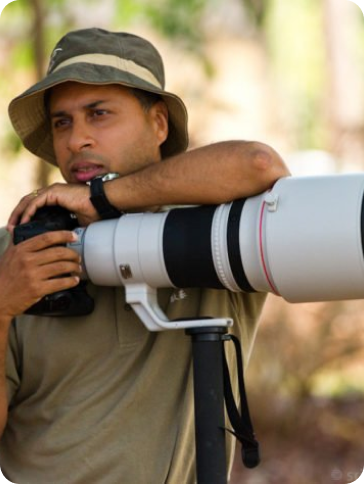-
Online Wildlife Photography Classes by Sudhir Shivaram
- My Journey
- Best camera settings for wildlife photograpy
- How To Choose The Right lens?
- Wildlife Photography Locations in India and best season to visit
- Sudhir’s favourite locations for photography
- Wildlife Safari options available
- Vehicle setup to do wildlife photography
- Using tripod in safari vehicle
- Using accessories in the vehicle diring safari – Part 1
- Using accessories in the vehicle diring safari – Part 2
- Understanding White Balance
- The basic settings of the camera and the exposure triangle parameters
- How to use Aperture Priority mode
- How to use shutter priority mode and manual exposure
- Understanding the different kind of metering modes along with exposure compensation
- Understanding the different kind of focusing modes and using the focusing points – Part 1
- Understanding the different kind of focusing modes and using the focusing points – Part 2
- The various switches and settings available on the lens
- Best camera settings for wildlife photograpy
- Understanding about subject knowledge
- Subject Knowledge – About Tigers – Part 1
- Subject Knowledge – About Tigers – Part 2
- Subject Knowledge – About Leopards
- Subject Knowledge – About Elephants
- Subject Knowledge – About Wild Dogs
- Subject Knowledge – About Sloth Nears and Monkeys
- Subject Knowledge – Deers
- Fundamentals of Composition – Part 1
- Fundamentals of Composition – Part 2
- Fundamentals of Composition – Part 3
- Signature shots in Wildlife Photography – Part 1
- Signature shots in Wildlife Photography – Part 2
- Extreme close-up compositions
- Composing creative images
- Shooting eye level in wildlife photography
- Eye Contact and head turn in wildlife photography
- Including Out of focus foreground elements
- Understanding depth of field for wildlife photography
- Concept of high key and low key images
- Composition – what to avoid and when not to shoot
- Composition – Portraits vs habitat shots
- Concept of story telling images
- Digital Post Processing
- Conclusion and the way forward







